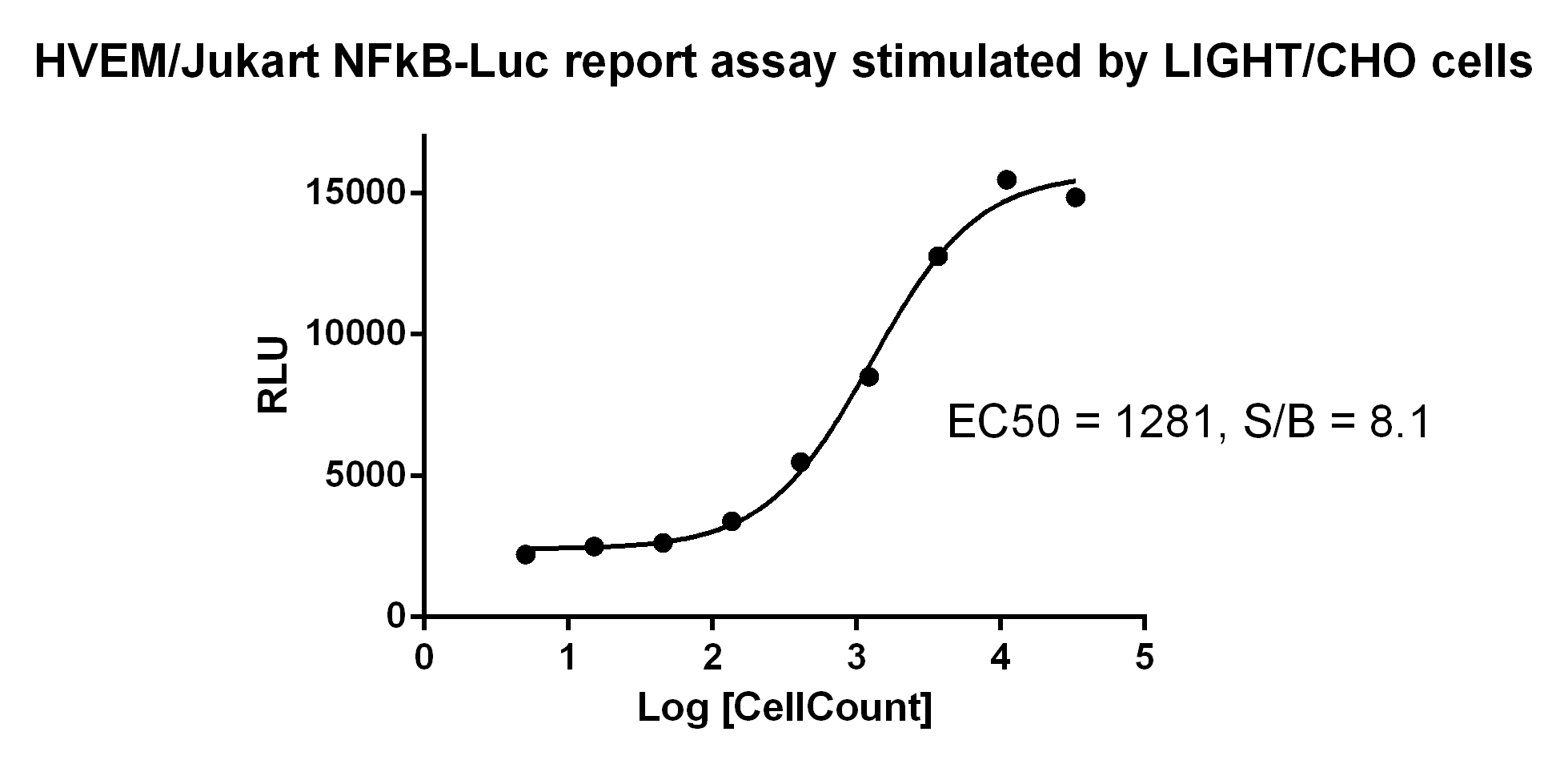

| RQP74013 | |
| I. Background | |
HVEM is a bidirectional switch regulating T-cell activation in a costimulatory or coinhibitory fashion whose outcome depends on the binding partner. HVEM can act as both receptor and ligand, the binding of endogenous ligand LIGHT or agonist antibodies to HVEM delivers a costimulatory signal; LIGHT/HVEM axis are co-stimulatory immune checkpoint molecules extensively studied for cancer immunotherapy; | |
| II. Description | |
| The HVEM cell line is a recombinant clonal stable Jurkat T cell line expressing firefly luciferase gene under the control of 4 copies of NF-κB response elements with constitutive expression of human HVEM (Herpes Virus Entry Mediator. Following activation by human HVEM ligand LIGHT, NF-ĸB transcription factors bind to the DNA response elements to induce transcription of the luciferase reporter gene. | |
| III. Introduction | |
| Host Cell: | Jurkat |
| Expressed gene: | HVEM-NFκB-Luciferase |
| Stability: | 32 passages (in-house test, that not means the cell line will be instable beyond the passages we tested.) |
| Synonym(s): | HVEM, TNFRSF14, CD270, HVEA, TR2, LIGHTR, HVEM Cell line, HVEM NFAT |
| Freeze Medium: | 90% FBS+10% DMSO |
| Culture Medium: | RPMI-1640+10%FBS+800ug/ml hygromycin+1ug/ml puromycin |
| Mycoplasma Testing: | Negative |
| Storage: | Liquid nitrogen |
| Application(s): | Functional(Report Gene) Assay |
| IV. Description of Host Cell Line | |
| Organism: | Human |
| Tissue: | Peripheral blood |
| Disease: | Childhood T acute lymphoblastic leukemia |
| Morphology: | Lymphoblast |
| Growth Properties: | Suspension |
| Ⅴ. Representative Data | |
| |
Figure 1. Recombinant Jurkat stably expressing human HVEM. | |

Figure 2. Detect Luciferase assay by Ultra Luciferase Detection Kit RQPH0001(we strongly suggest to purchase from Reqbio). Jurkat-HVEM-NFκB-Luciferase Reporter cells were stimulated by LIGHT/CHO cells, the S/B was 8.1-fold. |